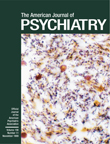Double-Blind Study of Clozapine Dose Response in Chronic Schizophrenia
Abstract
OBJECTIVE: This study explored the relative efficacy of three different doses of clozapine. METHOD: Fifty patients who met Kane et al.’s criteria for treatment-refractory schizophrenia or schizoaffective disorder were studied. All subjects were randomly assigned to 100, 300, or 600 mg/day of clozapine for 16 weeks of double-blind treatment. Forty-eight patients completed this first 16 weeks. Of the 50 patients, 36 went on to second and third 16-week trials of double-blind treatment at the remaining doses. RESULTS: Four subjects (8%) responded to the first 16-week condition, and one subject (2%) responded to the next 16-week crossover condition. A chi-square comparison of the response rates from the three dose groups failed to show a significant effect. An analysis of variance (ANOVA) comparison of Brief Psychiatric Rating Scale—Anchored (BPRS-A) total change scores from baseline to last observation carried forward showed a significant dose effect (600>300>100 mg/day) at 16 weeks of treatment. A crossover ANOVA of the BPRS-A total scores from the 48-week study also showed that the main effect for dose was highly significant; the 100-mg/day dose gave the higher (poorer) values, and the 300- and 600-mg/day doses gave equal (better) values. Gender played a role in clinical response to treatment at 100 mg/day. CONCLUSIONS: Clozapine treatment at 100 mg/day was less effective than at 300 or 600 mg/day. At 100 mg/day, women responded better than did men. The 600 mg/day group had the best results, but an occasional patient required up to 900 mg/day. Overall response rates were lower than expected.



